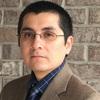Check out what is new in Poultry Industry
Find the best technical articles, forums, and videos on Poultry Industry at Engormix. Enter now and interact with the world's largest agricultural social network.
One benefit of low protein (LP) diets is improving gut health in a future of antibiotic-growth promoter free diets. Drew et al., (2004) found an interaction between dietary crude protein (CP) and proliferation of Clostridium perfringens, a pathogenic bacterium identified to cause clinical and sub-clinical necrotic enteritis (NE), which costs the poultry industry US$6 billion dollars annually (Wade and Keyburn, 2015). Keerqin et al., (2017) observed improvements in body weight with excess...
Comments : 0
Recommendations: 1
INTRODUCTION Pelleting is the most common form of thermal processing used in broiler feed manufacturing, aggregating the particles of ingredients into a cylinder by means of mechanical pressure, moisture, and temperature. A wide range of temperature and moisture can be used during conditioning, usually from 60°C to 100°C and 12 to 18% moisture (Hancock, 1992). Increase in feed intake (FI) is among the main reasons that motivate agroindustries to pellet feeds...
Comments : 0
Recommendations: 0
INTRODUCTION The physical form of the diet is a tool to improve broiler live performance, especially feed efficiency. However coarse feed particles enhance gizzard function, which was referred to as the pacemarker of gut motility (Xu et al. 2015a, Xu et al. 2015b, Kheravi et al. 2017). Studies respect to particle size impact on health, digestive efficiency and broiler performance were developed more than 60 years ago (Pacheco et al. 2014, Xu et al. 2015a, Xu et al. 2015b)....
Comments : 0
Recommendations: 1
Introduction: Due to the constant genetic evolution in both the production of broilers, nutritionists must constantly adapt their nutritional recommendations and feeding programs to maximize economic results at all times. These management and nutrition decisions must take into account: the animal (potential for growth), environmental conditions and the composition of the feed, which affect feed consumption and, consequently, the performance of birds. And economic...
Comments : 13
Recommendations: 11
Introduction Soybean [Glycine max (L.) Merr.] meal (SBM) is typically the main protein feedstuff included in livestock diets (Félix et al., 2010; Oliveira et al., 2020). After being subjected to an adequate heat treatment, SBM has a high crude protein content, as well as a high digestible energy and low fiber contents (Félix et al., 2010). In general, SBM makes up 30% of broiler diets (Duarte & Junqueira, 2013). However, broiler performance is strongly...
Comments : 0
Recommendations: 0
INTRODUCTION Under current production systems, turkeys have traditionally been protected from pathogenic microorganisms by vaccination and antibiotics. For decades, subtherapeutic doses of antibiotics have commonly been used within the poultry industry to improve production performance and reduce pathogenic microbial challenges. However, negative consumer perception and increased regulatory guidance prohibiting the use of growth promoters or antibiotics within the animal...
Comments : 0
Recommendations: 1
INTRODUCTION The inclusion of fats and oils in broiler chicken diets is a common practice because they provide essential fatty acids, improved the absorption of soluble nutrients in oil and increased the content of metabolizable energy (ME) in the diets (Hossain and Das, 2014). Feeding programs are established based on EM needs, so nutritional strategies are sought to optimize productivity considering economic and environmental aspects during the production cycle (Andreoti et...
Comments : 0
Recommendations: 0
In 2021 mycotoxins semiannual survey, Life Rainbow Biotech randomly collected 163 feed samples of raw materials and feed mills in farms and analyzed. The samples were tested for aflatoxins (B1, B2, G1, and G2), zearalenone, fumonisins (B1, B2, and B3) and deoxynivalenol (DON) by the ELISA Mycotoxin analysis kit. Results: 163 feed samples collected, and 74.8% were contaminated with Zearalenone and 71.8% contaminated with Aflatoxins (table 1). The maximum concentrations of...
Comments : 3
Recommendations: 1
1. Introduction Antimicrobials are routinely used to treat clinical livestock diseases, as well as to control common disease events, or even as animal growth promoters [1]. Though the latter use is not allowed in many countries worldwide, in some still continue using them for prophylaxis and as growth promoters’ purposes [2,3]. Tetracyclines and sulfonamides are some of the most frequently used antimicrobial classes in animal production throughout the world [4]....
Comments : 0
Recommendations: 0
NEW POLICIES AND ACTIONS
"Dual control of energy consumption" has become a crucial driving force for the contradiction between supply and demand of the veterinary APIs market. On Sep 16, the state planning agency published new policy...
Comments : 0
Recommendations: 0
Introduction According to the FAO, livestock is one of the fastest growing sectors of global agricultural production. It is evolving in response to the rapid increase in demand for products of animal origin, especially in developing countries. In developed countries, through intensification practices that have helped increase yields and efficiency while bringing down costs, the demand for livestock products is stagnating and have to face many...
Comments : 1
Recommendations: 0
...
Comments : 0
Recommendations: 1


Collaborating with producers: Evonik & Al-Estesharia – A Win-Win Partnership
Suggested link
...
Comments : 0
Recommendations: 2
In recent years protein feed ingredients are consistently increasing in cost and protein in poultry diets has become one of the most expensive nutrient. Urbanization is putting pressure to produce more and high quality protein sources in less space. Neutralizing substandard quality feed ingredients with effective tools has also become a new concern. In parallel people are more concerned on impact of animal agriculture on environmental pollution. Hence research has focused in the direction to...
Comments : 19
Recommendations: 8


Effects of <i>Ganoderma lucidum</i> fermentative products supplementation on growth performances, carcass characteristics and immune response in Native Chickens
Suggested link
...
Comments : 1
Recommendations: 1
Introduction Sorghum ranks fifth in global cereal production after corn, wheat, rice and barley. Most of the world’s sorghum grain is fed to animals, including poultry, but it is also used for food (Africa) and alcohol (ethanol, beer in Africa and baijiu in China). World sorghum production for the last 5 years averaged about 63 million metric tonne (Mmt), the USA being the largest producer (about 12 Mmt or 18% of world production). Australian production averaged...
Comments : 0
Recommendations: 1
Some breeder flocks have higher egg peak production, 92%, whereas other breeder flocks reach 82% at egg peak. On the other hand, some broiler breeders lay a good peak egg production, but as hens age, egg production descends more than expected. In this situation, how can we increase the persistence of egg production in broiler breeders? Breeder managers should evaluate the following four points for improving the persistence of egg production: (a) body weight uniformity and peak egg...
Comments : 5
Recommendations: 3
INTRODUCTION Feed management practices, aiming to improve animal welfare without increasing production cost, are becoming more important for the poultry industry (Mateos et al., 2012). In broilers, ad libitum feeding of pellet feeds is associated with a reduction in starch digestibility (Svihus and Hetland, 2001; Abdollahi et al., 2011; Serrano et al., 2013) and an increase in the incidence of metabolic problems (e.g., ascites and lameness) and mortality (Leeson et al., 1999;...
Comments : 2
Recommendations: 0
Introduction Genetic companies using new advances in genetic engineering are working to achieve high-persistence brown and white egg layer hybrids capable of producing more than 500 eggs in a 100-week lay and molt-free period. 1-The quality of the shell is the main reason for a producer to discard a flock of layer. 2-The posture drop is the second. - The most important nutritional strategy is bone health during rearing and all production through the...
Comments : 2
Recommendations: 4
Featured comment:
Ammonia, also called NH3, can be measured using a specific portable instrument as you can do with temperature, humidity, etc. Also it can be supplied an NH3 sensor by the companies making the Poultry houses control systems as part of this system. With this, you can control it, if installed, 24/7 through a web browser. To detect Ammonia it is not even really needed to measure it since during the daily check in the Poultry houses it is easy to detect it by the “smell”. ...
Comments : 42
Recommendations: 1








.jpg&w=3840&q=75)




.jpg&w=3840&q=75)



.jpg&w=3840&q=75)



















